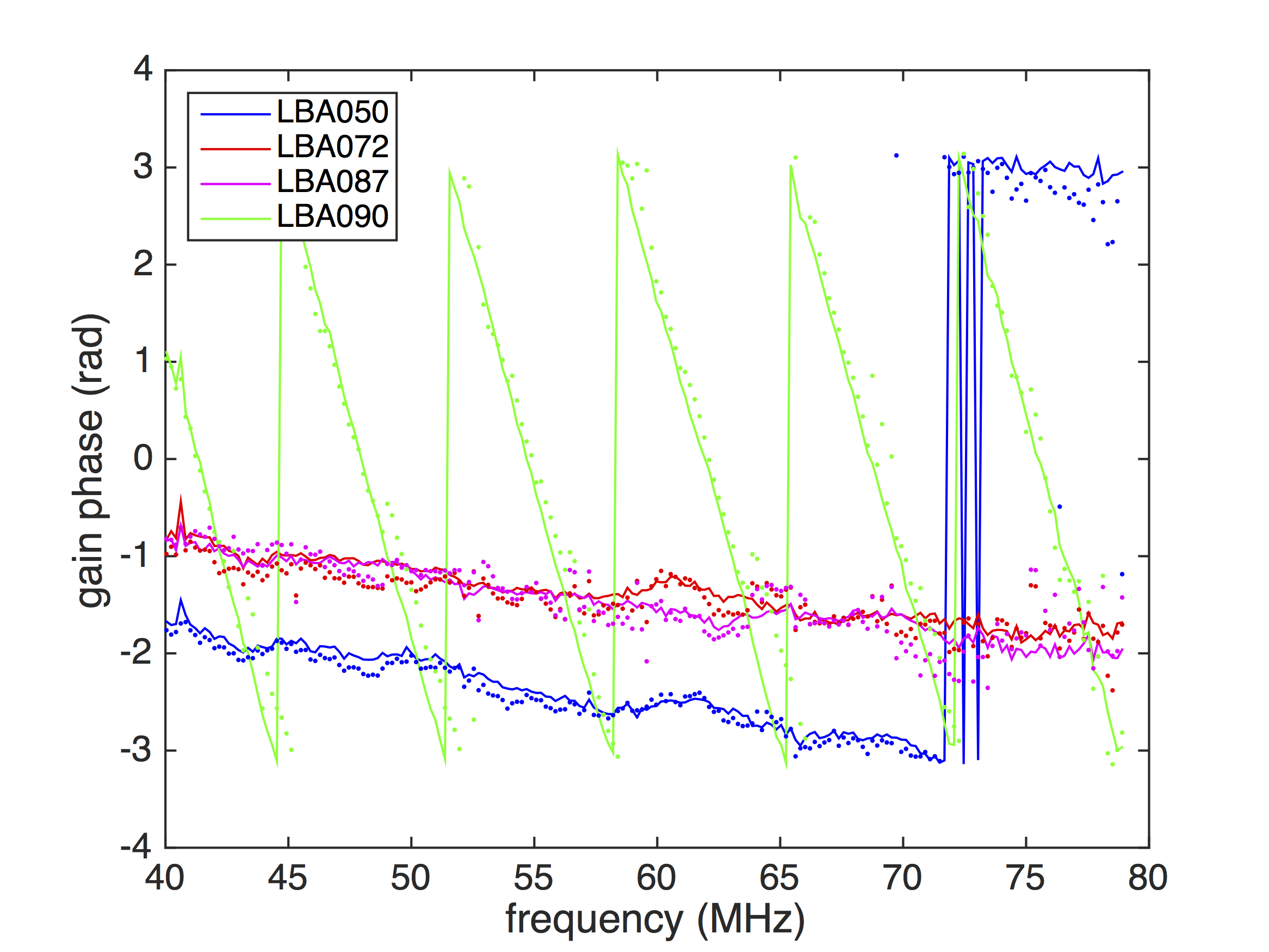Daily Image
10-11-2017Blind self-calibration
| Submitter: | Stefan Wijnholds |
| Description: | Blind calibration techniques can be used to calibrate arrays when no (accurate) source model is available, for example due to observing in a new frequency window or due to unexpected sources like transients and RFI. A well-known example of a blind calibration technique is redundancy calibration, which was originally proposed for the WSRT. Unfortunately, this only works for regular arrays. Inspired by one of the key premises of self-calibration, namely that the sky can be modeled by a limited number of source components, a few DOME researchers started looking into blind calibration using a sparsity constraint on the source model. This plot shows a comparison between the gain phase solutions obtained for a few antennas of the LOFAR CS002 LBA outer station by standard calibration procedures using a source model (solid curves) and by blind calibration using a sparsity constraint (dots). The results agree very well! The slightly larger spread in the blind calibration solutions can be explained by rounding the actual source positions of Cas A and Cyg A to image grid points in the alignment step needed to resolve the phase / source position ambiguity in blind calibration. An interesting result from the literature on sparse reconstruction is that, if the source model is identifiable, the estimation accuracy for image reconstruction is identical to that of the socalled oracle estimator. This non-existing estimator knows, a priori, where the sources are. This implies that, if the apparent calibration source fluxes need to be estimated, for example due to unknown direction dependent effects common to all receivers, the calibration accuracy of blind calibration is identical to that of regular self-calibration! This is one of the key insights gained from this blind calibration study, whose details are discussed in a recent MNRAS paper by Simone Chiarucci and Stefan Wijnholds. |
| Copyright: | Stefan Wijnholds |
| Tweet |  |
